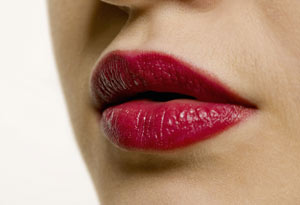Oprah's Makeup Artist Shares His Secrets for a Perfect Pout

Photo: Thinkstock
Smile—though your heart is breaking because your lipstick's totally the wrong color. Oprah's longtime makeup artist, Reggie Wells, helps you select a shade that will have you grinning for real.
If you want to make Oprah happy, suggests Reggie Wells, her makeup artist and the author of Face Painting (Owl Books), "put a bunch of new lipsticks in front of her with the caps off. She gets so excited seeing all those colors." She's not the only one. Yet that color lust can lead to cabinets crammed with lipsticks that looked great at the store but have lost something in transit. Hoping to deliver us from that fate, Wells offers advice on choosing the perfect shade:
1. Sizing things up. "Most people are concerned only about their skin tone when they choose a lipstick, and they leave out the most important factor—the shape of their lips," Wells says. "Decide if you want to play up the shape—if you think they're too small—or tone them down." Brighter shades make lips appear fuller, he says; neutral, warmer colors work well with full lips.
2. Wrist watch. "I like to test lipstick colors on the underside of the wrist," Wells says. "That area is closer to the color of your lips than the top of your hand is." But once you've narrowed your choice to two or three top candidates, Wells says, you should test them on your lips: "There's just no substitute."
3. Color critique. "Most women know what color they like on their lips, but then they let someone else talk them into the latest shade," Wells says. "You're the one who's going to be wearing it, so you need to feel comfortable in it—not the person behind the makeup counter." But to avoid getting into a color rut, he advises, start with a shade you're used to, then test out a lipstick that's a tone brighter or a few tones deeper. "Oprah loves the browns—they're her favorite," Wells says. "But she still has fun and experiments with other shades. She has worn just about every lipstick color there is."
4. Pair bonding. "Most of the great lips that you see in magazines are a blend of at least two shades," Wells says. "The mix gives the lips that beautiful depth of color. One downplays or intensifies the other." If the base is in the red or orange family, Wells likes to use a brush to blend in a pink or wine shade; if the base is more of a brown, he prefers warm neutrals or golds. "You can also play with opposite textures," Wells says. "If one's matte, try a gloss or something with a little frost. It's that blending of color and texture that makes a great lip."
More Great Makeup Tips



